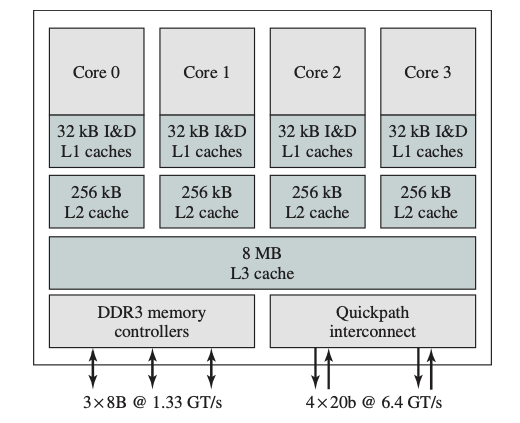The Memory Hierarchy, continued
The solution taken is not to rely on a single, consistent form of memory,
but instead to have a
memory hierarchy,
constrained by requirements and cost.
| Memory |
Access-time |
Capacity |
Technology |
Managed by |
| Registers |
0.5-3ns |
1-4KB |
custom CMOS |
compiler |
| Level-1 cache (on-chip) |
0.4-4ns |
8KB-256KB |
SRAM |
hardware |
| Level-2 cache (on-chip) |
4-8ns |
256KB-8MB |
SRAM |
hardware |
| Level-3 cache |
6-16ns |
4MB-64MB |
SRAM |
hardware |
| Main memory (RAM) |
10-60ns |
64MB-128GB |
DRAM |
operating system |
| hard disk |
3M-10M ns |
128MB-24,000GB |
magnetic |
operating system |
| solid-state disk (SSD) |
0.5M-1M ns |
16GB-18,000GB |
DRAM/SRAM |
operating system |
|

|
For example, a contemporary laptop or home computer system may include:
- a modest amount of cache memory (1MB) to deliver data as quickly
as possible to the processor,
- a larger main memory (8GB) to store entire programs and
less-frequently required data, and
- long term, persistent storage in the form of a hard disk (1TB),
or SSD (256GB).
CITS2002 Systems Programming, Lecture 6, p6, 7th August 2024.
|


 CITS2002
CITS2002 CITS2002 schedule
CITS2002 schedule